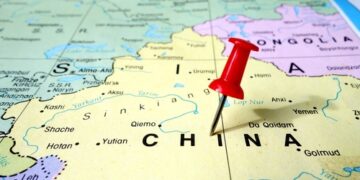At their Final Event 2017, on 9 November, partners presented the outcome of the EU’s PORTOPIA project, shedding light on future developments, opening the way for data digitalisation of the European port sector.
PORTOPIA, which started in 2013, presents an international consortium of academic, research and industrial partners aiming at creating a port management system to serve the industry’s stakeholders in improving the sustainability and competitiveness of the European Port System.
During a day of high-level interaction, the project partners presented the four main tools that resulted from the PORTOPIA project: the Rapid Exchange System+, the environmental dashboards, port governance trends, a user perception measurement tool.
Part of the output of the project in terms of indicators and insights in several perspectives, is presented in the new 2017 EU Port Industry Performance Report. Findings included:
- Increasing privatisation and commercialisation of port authorities
- Increased cooperation and merging of port authorities, be it top-down or bottom-up
- Decreasing role of port authorities in the organisation, provision and operation of services to the ships
- More active role of port authorities in hinterland connections and in infrastructure investments outside the port
- Energy transition and role of port authorities in energy developments in and outside the ports and role of port authorities in fighting climate change.
- Dependency of port authorities from industrial partners in terms of revenues and uncertain future of fossil based sectors, chemicals or other traditional sectors based in ports.
- Port authorities increased efforts on Corporate Social Responsibility initiatives and reporting, including environmental impacts of port activities, education, job quality, etc.
Further, the report revealed that the total TEU handled in European ports suffered from the economic and financial crisis which started in late 2008. However, the total container throughput in the EU increased by 13.9% between pre-crisis year 2007 and 2016.


In addition, according to the report, the top trade partners in 2016 are for export, the United States with 21% (18% in 2014), China 10% (same as in 2014), followed by Switzerland, Turkey, Russia, Japan, and Norway. 
For Imports, China leads with 20% of the total trade value (18% in 2014), followed by the US with 15% and Switzerland with 7%. In the period 2014-2016, Russia lost a position in the top ranking, both in imports and exports.
Michaël Dooms, the project coordinator said: “Beyond the statistics and the indicators, this project has foremost dealt with creating a culture of transparency and trust, as well as value-creating technologies to deal with performance and analysis. It therefore creates a solid basis for further developments highlighting the performance of the European seaport industry to their stakeholders, supporting better relations and improved strategic decision-making on the individual, regional and international level when it comes to the management of port infrastructure and services.”
Explore more in the following report:































































